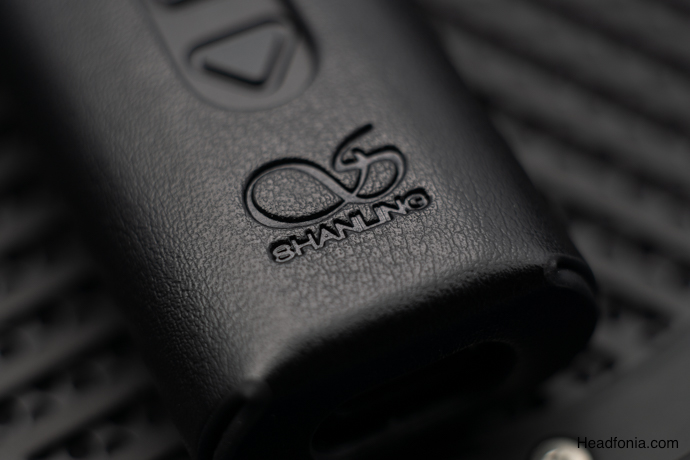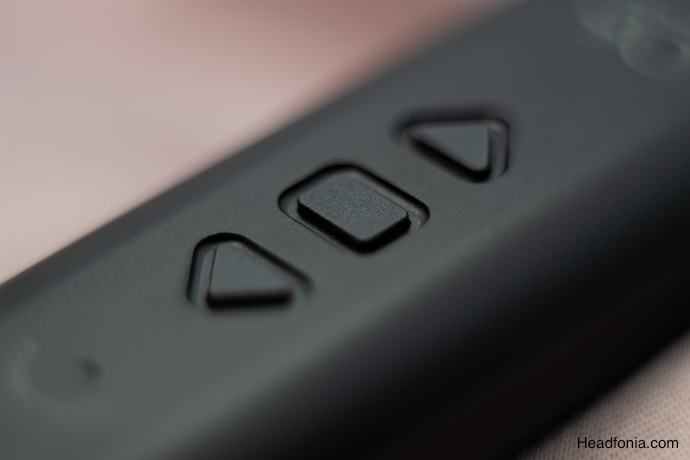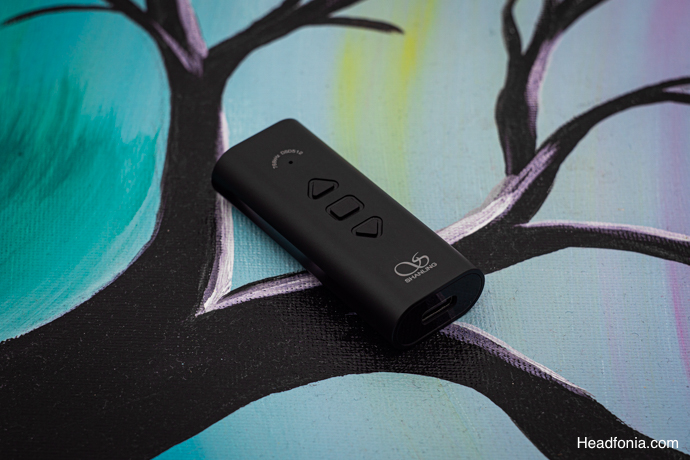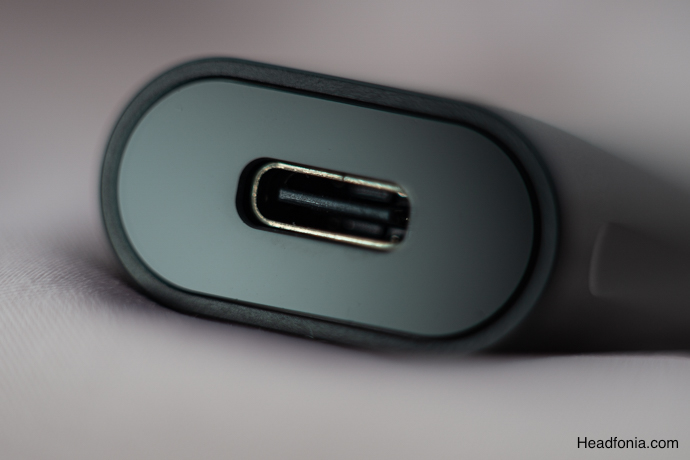Today we in this two-page article, review the $109 USD Shanling UA3 portable USB DAC/AMP dongle.
Disclaimer: We were sent the UA3 USB DAC/AMP for this review, in exchange for our honest opinion. We thank Shanling for the opportunity.
Shanling
Founded in 1988, Shanling has been developing Hi-Fi products for more than 30 years now. From high-end CD players to classy tube amps, the brand made a name thanks to great craftsmanship and top-of-the-line performances.
The brand also developed a complete range of portable players, IEMs, and wireless devices. You can check our previous Shanling reviews here. Shanling produces successful products in many fields, thanks to both material quality and well-implemented technologies. Today we’re going to take a look at the Shanling UA3.
Shanling UA3
Shanling names the series of portable DAC/AMPs they designed, the UA series. There are currently four products in the UA lineup. The UA1, UA2, UA3, and the flagship UA5. The UA1 and UA2 are simpler, more straightforward products compared to the UA3 and UA5.
Shanling UA3 is slightly more advanced than the 1 and 2 with customizable multifunctional buttons on the chassis. It utilizes the latest mid-tier DAC from AKM, AK4493SEQ. Additionally, it uses two Ricore RT6836 amplifiers to deliver clean power to your favorite IEMs and headphones. The UA3 retails for 109 USD and is available on well-known retailers such as Linsoul.com or Shenzhenaudio.com. Before taking a closer look at the unit, I recommend checking out the specs and highlights of the UA3.
AKM AK4493SEQ DAC + Dual Ricore RT6863 OP-AMPs
High-Precision Low Jitter Clock
Advanced Low-Dropout Voltage Regulator
3.5mm: 125mW@32Ω – 4.4mm: 211mW@32Ω
USB 1.0 / 2.0 Switching + Companion App (Android Only)
32-bit 768kHz & DSD512
Low Power Draw Mode
Machined Aluminum Chassis
Available in Black and Green (new) color.
Packaging & Accessories
The UA3 comes in a compact white cardboard box. Shanling has preferred to use a minimalistic box design instead of the more flamboyant design they used with the packaging of the UA5. On the front of the box, the design scheme of the UA3 is depicted as an outline and looks simple, yet, elegant. Information such as specs, serial numbers, and company addresses are listed on the back of the flip-opener box.
Accessing the inside of the box, we see the UA3 held safely by a foam compartment where we also see the USB-A to USB-C converter. Under this compartment, there is a second one that holds the manuals and warranty cards along with the short USB-C to USB-C interconnect cable. The cable is braided and looks nice. The USB-C connectors feel durable.
Both the cable and the adapter carry Shanling’s company logo.

Design, Build & Accessories
Shanling has its own design language and many of Shanling’s devices share various elements of this design language. The UA3 is, of course, one of them. With rounded edges, an anodized finish, and CNC machined chassis from a solid aluminum block, the UA3 offers a very premium build quality.
The USB connector and the headphone sockets used feel durable but only the 4.4mm Pentaconn socket is gold-plated. The device is very light and compact, it weighs approximately 15-20 grams.
I really like companies sticking to a certain design methodology. I want to share something that I think is an easy detail to miss. If you have used a Shanling DAP before, you know that they use design elements that specifically combine aluminum and glass.
Since the UA3 doesn’t have a screen, they can’t use glass, so a glossy panel is placed around the USB-C port to create a glass feel, which I really dig. I like this kind of attention to detail from companies and I appreciate it. I also know that many of you do, too.
Moving on to the layout, the UA3 has physical buttons on the chassis that are customizable through the Eddict Player application. Unfortunately, it is only available on the Android platform. We’ll talk about controls in the following chapters. Additionally, there is a single LED on the chassis that is used as a sampling rate indicator.
Overall, the design and build quality of the device is quite good and I did not come across any CNC milling defects or assembly issues with the UA3. Shanling has also designed a leather case for the UA3 and after searching the web, I found it here on AliExpress for $15 USD.
Shanling has sent me the case and it has a great texture that looks pretty chic. The stitching of the case is perfect and the odorless PU leather they used feels premium. The case thickens the unit a little but provides good protection against scratches and drops.

Features & Technology
Let’s take a closer look at the tech Shanling used in the UA3. We see that the AKM4493SEQ, which is new and I believe the first chip from the AKM after the unfortunate incident. It is very nice to see AKM back at it again and I surely hope to see more DACs from them. ESS has been dominating the market meanwhile and monopoly is never good for us consumers.
On the amp floor, a relatively unknown op-amp named RT6863 by Ricore is used. It was also used in the UA5, which is the current flagship of the UA series The UA3 is capable of delivering 211mW to a 32-ohm load, identical to the UA5.
Shanling mentions the presence of LDOs and jitter clocks on the audio PCB but there is no hardware volume control. The multifunctional buttons control the software volume only. Additionally, for minimum bit-loss, by using the Eddict Player’s controls, you can adjust the hardware volume on the app and keep the software volume at max, however, this is just not possible with iOS devices as the app is only available on the Android platform.
The UA3 comes with USB 1.0 support and Shanling uses a very practical approach here. If you want to plug it into your Nintendo Switch, you just have to hold down the middle button whilst plugging it into a USB 1.0 device and UA3 will automatically be utilized. It is a much better solution than relying on external apps and I congratulate the smart engineer behind this idea.
My experience with the UA3 was not entirely rainbows and unicorns though. The product’s user manual mentions the hardware volume control mode and states that we can switch to this mode by holding the middle button for 2 seconds, but unfortunately I could not use hardware volume control with this feature both on Android and on macOS. Although I updated the UA3 to the latest firmware (V01.01.07 at the time of this writing) I couldn’t use the DAC on my Macbook with MacOS Monterey operating system in USB 2.0 mode.
When I switched to USB 1.0 mode, I was able to use the DAC without any problems and control the hardware volume effortlessly, using Tidal’s exclusive mode. Shanling releases regular updates for all of their devices and I am sure that their team of skilled engineers will be able to take care of this problem, soon. You can check the latest firmware through this link.
EDIT: Shanling released new firmware (v01.01.07) for the UA3. With this new version, the problems on the Android platform seem to be solved.
The review continues on Page Two, after the click here or by using the jump below.
Page 1: Shanling, Shanling UA3, Packaging & Accessories, Specs, Design & Build Quality, Features & Technology
Page 2: Sound, Low, Mid, High, Technical Performance, Comparisons, Last Words










mario
Although LDOs and jitter clocks are included on the audio PCB, Shanling notes that the volume cannot be adjusted mechanically.
Richie Chang
Hello,
If I switch from connecting the pc speakers to the motherboard to this usb-dac, will there be a noticeable improvement in sound quality?
Thanks
Yagiz
Depends on the speakers.
Partha Banerjee
Yes. But it will be much better to use a Desktop DAC from any reputed brand e.g. Toppings, Fiio K3 or IFI air DAC.